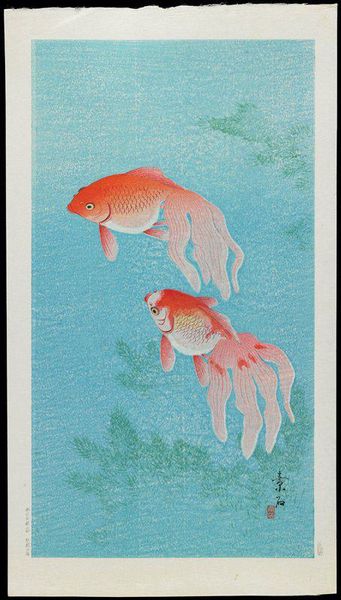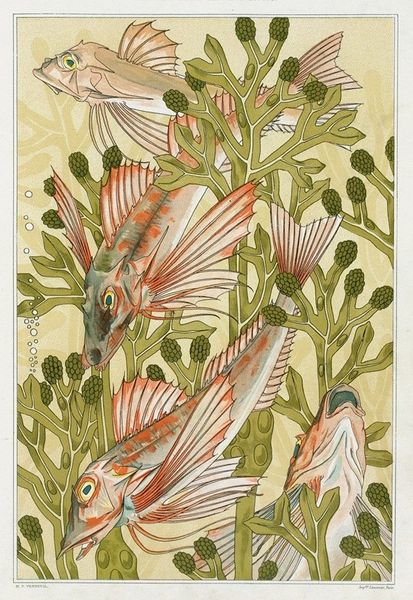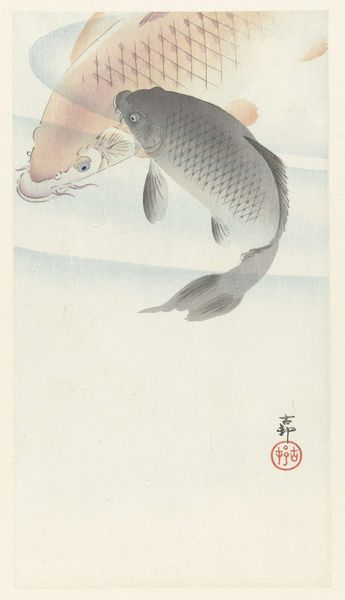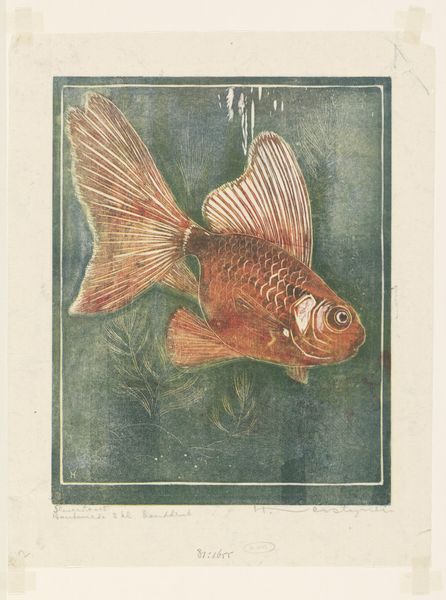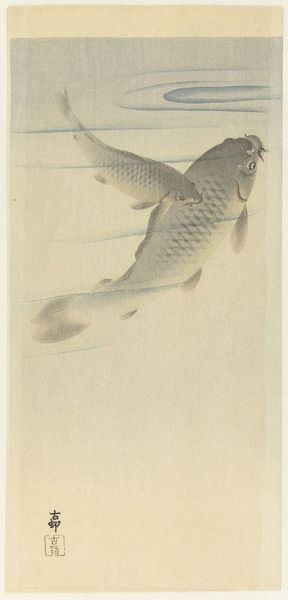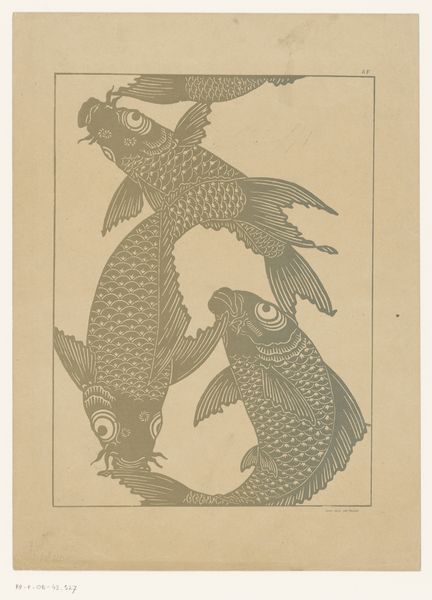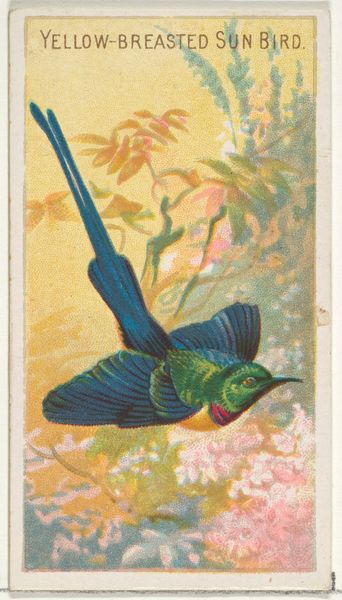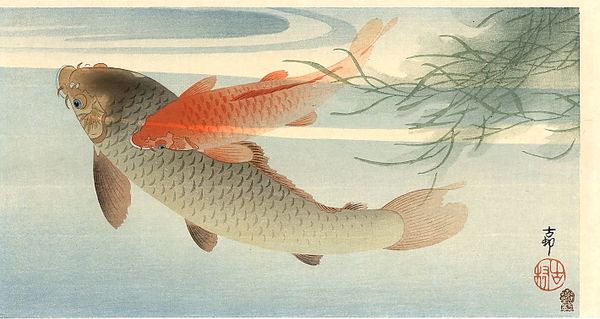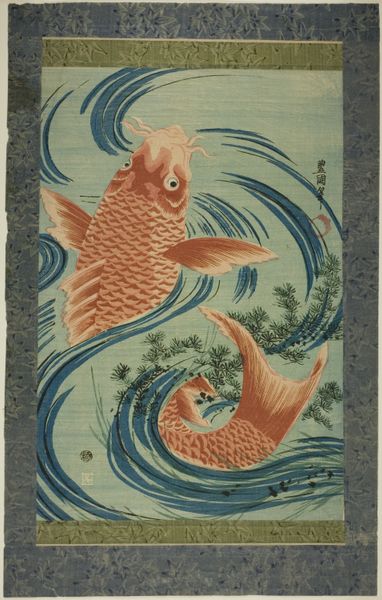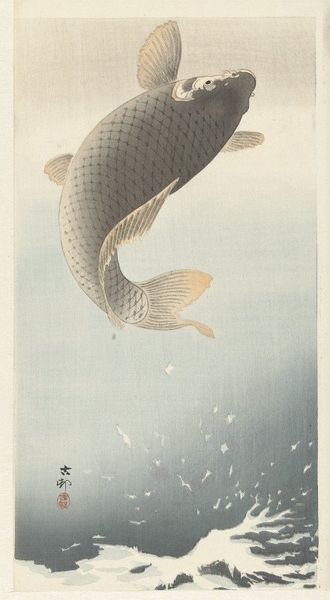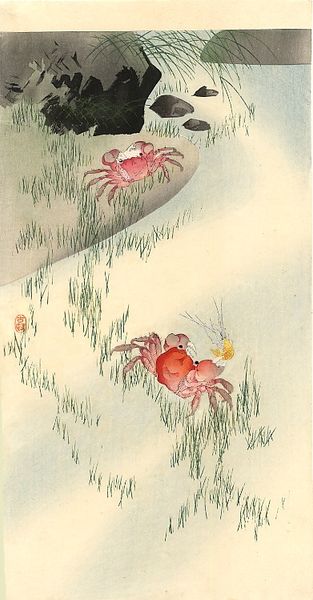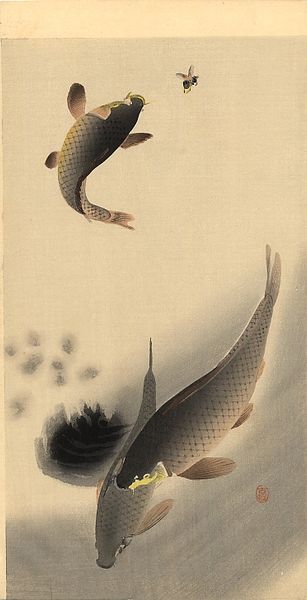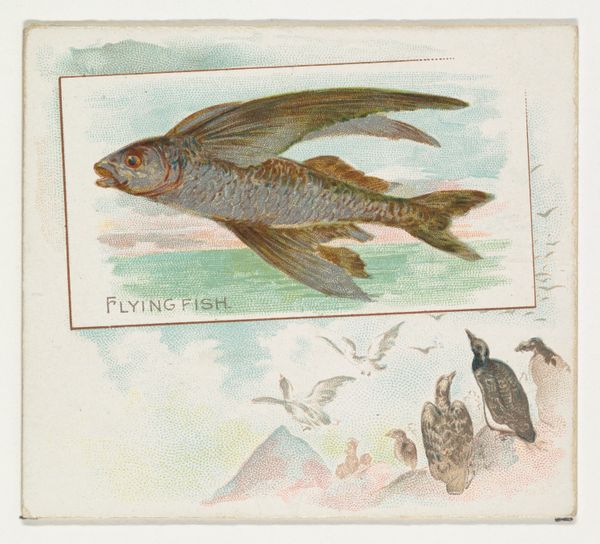
Dimensions: height 377 mm, width 241 mm
Copyright: Rijks Museum: Open Domain
Curator: Two fantail goldfish, suspended in that weightless world beneath the surface… It's got this breezy, innocent feel. Editor: Yeah, totally serene. Like watching an aquarium but somehow distilled, right? I find it whimsical. It's almost childlike. The colours are doing a lot of work. Curator: It is interesting, isn't it? What we are beholding is Ohara Koson's "Twee sluierstaart goudvissen", dating somewhere between 1900 and 1936. What we have here is an ukiyo-e style woodblock print enhanced with watercolour. Look how Koson uses very precise lines while capturing the ephemeral sense of life beneath the water. This artwork is a delightful representation of the natural world through a synthesis of Japanese artistic conventions and European impressionistic methods. Editor: The flowing fins remind me of flowing calligraphy, each stroke meaningful. And is it just me, or are these fantails a bit cartoonish? I’m feeling this odd combination of Japanese tradition with something unexpectedly… modern. Curator: The goldfish motif itself carries weight. In East Asian cultures, fish, especially goldfish, represent abundance, wealth, and good fortune. Paired in twos like this, they often signify marital harmony and domestic bliss. Do you feel that tension between their inherent symbolic associations and the sort of 'playful' characterisation you observe? Editor: Absolutely! It is so funny. On the one hand, we’re dealing with an art form that often served to portray pleasure quarters. Here, we have goldfish acting as domestic guardians of harmony. Curator: Indeed! In the original Japanese tradition, this type of art served multiple functions, which is something the modern eye often tends to overlook, wouldn't you agree? Editor: For sure. Looking at it now, that soft colour palette gives this print the aura of a treasured memory. Like something beautiful glimpsed fleetingly beneath the water, or beneath consciousness, and held in the heart. Curator: It will be wonderful to revisit the symbolism when looking at Koson's work again, right? Editor: No doubt. Its dreamlike quality and underlying cultural context are definitely going to stay with me.
Comments
No comments
Be the first to comment and join the conversation on the ultimate creative platform.
